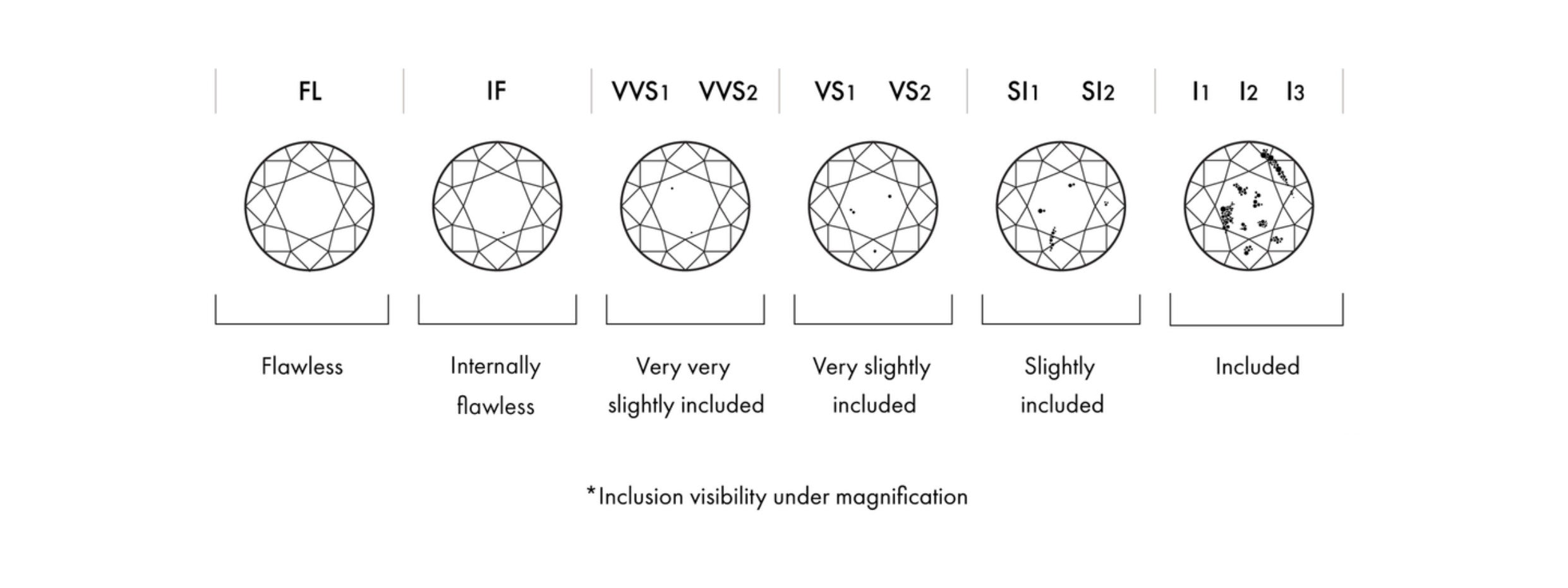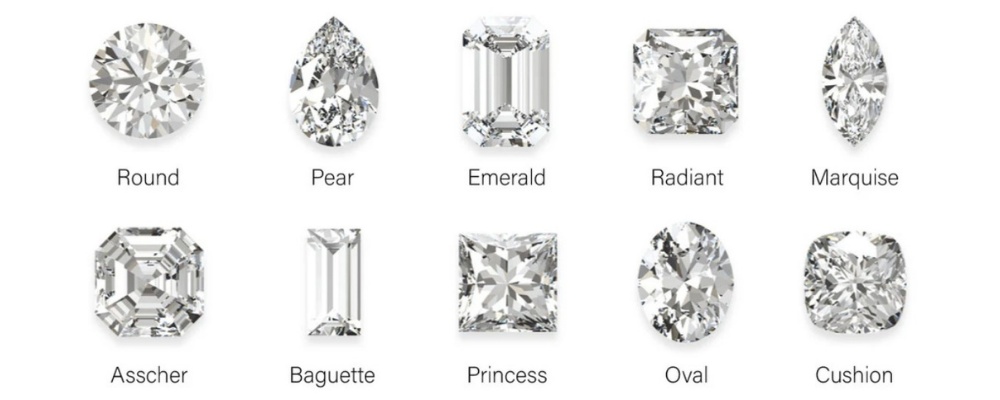Diamond Basics: The 4 C’s
Choosing the right diamond — whether for an engagement ring, a timeless necklace, or everyday jewelry — is about more than just sparkle. Every diamond is evaluated by four essential qualities known as the 4 C’s:
- Cut
- Color
- Clarity
- Carat
At Beuséa, we specialize in lab-grown diamonds that are 100% real, conflict-free, and sustainably created. This guide explains the 4 C’s of diamonds so you can make an informed and confident choice.
Carat – Diamond Weight and Size
The carat of a diamond measures its weight, not its beauty.
1 Carat = 0.2 grams
- A higher carat diamond usually costs more, but size isn’t everything.
- A well-cut 0.90 ct diamond can look brighter and more elegant than a poorly cut 1.00 ct diamond.
- Smart buyers focus on cut quality first, ensuring maximum brilliance at the right size for their budget.
Color – Diamond Hue and Brightness
Diamond color is graded on a scale from D (colorless) to Z (visible tint). The closer a diamond is to colorless, the rarer and more valuable it is.
- Round brilliant diamonds can mask slight color, allowing you to save without losing beauty.
- Fancy shapes (oval, emerald, princess cut) often need higher color grades to maintain a crisp, white look.
Clarity – Diamond Purity
Clarity refers to the number of inclusions (internal flaws) or blemishes (surface marks) inside the diamond.
- Graded under 10× magnification, but many diamonds are eye-clean, meaning flaws are invisible to the naked eye.
- Choosing an eye-clean diamond gives the perfect balance of beauty and value.
Diamond clarity ratings and the clarity scale
FL - Flawless
FL diamonds are Flawless with no internal or external imperfections visible to a skilled grader under 10-power magnification.
IF - Internally flawless
IF diamonds are Internally Flawless but may have small surface blemishes visible under magnification.
VVS1 - Very, very slightly included, first degree
VVS diamonds are Very, Very Slightly Included with tiny inclusions that are difficult to see even under magnification. The “1” in this rating puts these particular diamonds at the top of their grade.
VVS2 - Very, very slightly included, second degree
VVS diamonds are Very, Very Slightly Included with tiny inclusions that are difficult to see even under magnification. The “2” in this ranking means that they are just beneath the VVS1 rating.
VS1 - Very slightly included, first degree
VS diamonds are Very Slightly Included with minor inclusions that range from difficult (VS1) to easier (VS2) to see under magnification. The “1” in this rating makes them slightly superior to VS2 diamonds.
VS2 - Very slightly included, second degree
VS diamonds are Very Slightly Included with minor inclusions that range from difficult (VS1) to easier (VS2) to see under magnification. The “2” in this rating puts them just below VSI diamonds.
SI1 - Slightly included, first degree
SI diamonds are “Slightly Included.” Inclusions might not be visible to the naked eye, but are easy to see when under magnification. The “1” in this rating makes them slightly superior to SI2 diamonds.
SI2 - Slightly included, second degree
SI diamonds are “Slightly Included.” Inclusions might not be visible to the naked eye, but are easy to see when under magnification. The “2” in this rating makes them slightly inferior to SI1 diamonds.
Cut – The Sparkle Factor
The cut is the most important of the 4 C’s. It determines how well the diamond reflects light, creating brilliance, fire, and sparkle.
- A well-cut diamond can appear larger and more dazzling than a bigger carat stone with a poor cut.
- Ideal proportions and symmetry are key to maximum sparkle.
What Diamond Cuts Are Available?
Many people use the term cut to describe a diamond’s shape, but in gemology, they are not the same. The cut refers to how the diamond’s facets are arranged and how well they interact with light, while the shape describes the stone’s overall outline (such as round, oval, or emerald). For simplicity and easier understanding, shapes are often grouped under the category of “cut.”
No two diamonds are ever exactly alike — even if they appear identical at first glance. On closer inspection, differences in carat weight, color, cut, and clarity become noticeable, each reflecting the stone’s unique quality. That’s why the 4 C’s of diamonds are the perfect standard for determining value. Alongside the design, they play a vital role in choosing the perfect piece of jewellery that reflects both beauty and individuality.





